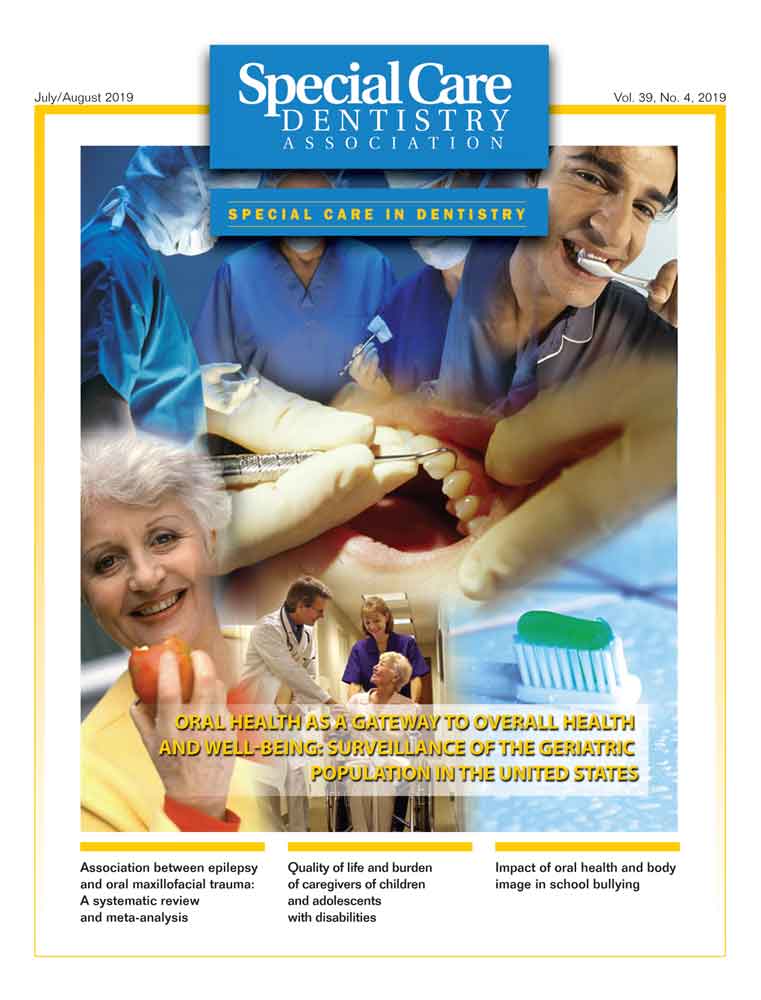Quality of life and burden of caregivers of children and adolescents with disabilities
Abstract
Aims
To evaluate the quality of life (QoL) and burden of primary caregivers of children and young adults (PCCYAs) with and without disabilities.
Methods
A cross-sectional study was carried out with sample composed of 336 PCCYAs with cerebral palsy (CP; n = 84), Down syndrome (DS; n = 84), autism spectrum disorder (ASD; n = 84), and without disabilities (control group: CG n = 84), matched by gender and age. The burden of caregivers was assessed with the Zarit Burden Interview (ZBI), whereas QoL was assessed using the WHOQOL-BREF instrument.
Results
QoL and burden of CG presented better results compared to groups with disabilities, with the lowest environmental domain of all study groups (P <.001). The prevalence of burden was moderate for PCCAs of groups with disabilities. There was association between all WHOQOL-BREF and ZBI domains and variables age, schooling, occupation and per capita income (Spearman's correlation coefficient, P <.05). There is a negative impact on WHOQOL-BREF, with an increase in the level of burden of PCCAs with disabilities.
Conclusion
The majority of PCCYAs were unemployed married mothers, with low schooling and health problems. Older caregivers experience even higher burden and greater impact on QoL.
CONFLICT OF INTERESTS
The authors Alina Lúcia Oliveira Barros, Gabriela Mancia de Gutierrez, Amanda Oliveira Barros, Maria Teresa Botti Rodrigues Santos have no financial relationships and no conflicts of interest to disclose.




